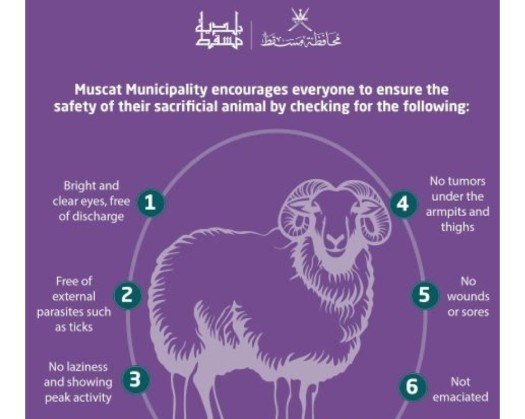With Eid al Adha fast approaching, the Ministry of Agriculture, Fisheries, and Water Resources has issued guidelines to ensure the safety and quality of sacrificial animals. These guidelines are designed to inform citizens and residents about the importance of maintaining hygiene and safety when purchasing and preparing animals for sacrifice, ensuring they are free from any health risks.
It is crucial to ensure that animals are disease-free when purchasing them, as sick livestock can pose serious health risks. The ministry also recommends utilizing municipal slaughterhouses to uphold public health standards.
Precautionary measures to be followed before, during, and after slaughter include:
1. Checking animals for external parasites like ticks, as some diseases may not exhibit symptoms and the presence of ticks does not always indicate illness.
2. The person conducting the slaughter should be in good health, free from injuries or wounds, and should wear protective clothing.
3. Proper and hygienic disposal of waste after slaughtering is essential to prevent the spread of infections, avoiding open areas.
4. Zoonotic diseases, such as Crimean-Congo hemorrhagic fever, can be transmitted during the slaughtering process. This deadly viral disease, carried by ticks, has a mortality rate of approximately 40 per cent in humans.
Zoonotic diseases refer to infections that can be transmitted between animals and humans through different direct or indirect means, such as respiratory, digestive, ocular, or skin contact, as well as bites from ticks, mosquitoes, and lice.
These measures are implemented by the ministry to safeguard the well-being of the public and residents, and to enhance health education within the society. It is strongly advised by the ministry for individuals to adhere closely to these guidelines when acquiring and managing sacrificial animals.









